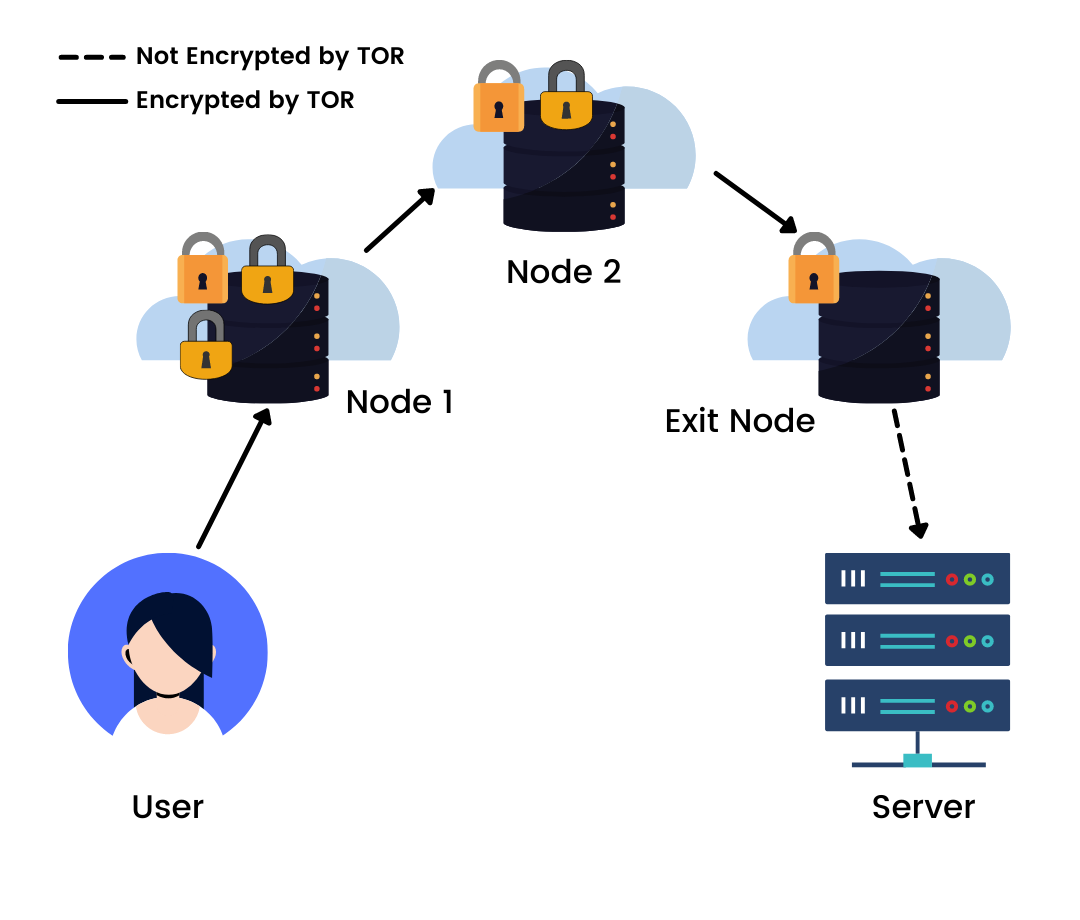
Since you are reading this article, we assume you are pretty familiar with surfing the web, visiting random websites etc. But what if we say some websites exist but are invisible to the standard web browser, and you can’t reach them even if you knew its URL. And what’s more interesting is that they are not one or two or five websites, but it is many times more than the entire collection of actually visible websites.
This hidden section of the web that most search engines don't list in their results is known as the Deep Web.
Like an iceberg, the internet is vastly full of surprises, most of it invisible to an average user. Here is a quick summary:
- Surface web: It is the web that we know. Any search result that pops up when you enter a keyword is on the surface web.
- Deep web: It is an invisible web, and we need special browsers like TOR browser to visit them.
- Dark web: Ironically, it is a deep web that is even deeper and more invisible. Content on the dark web is encrypted and is useful if you want to remain anonymous while browsing the internet. It consists of primarily illegal stuff, videos, products like drugs and weapons. It is a dangerous place to be, and we strongly advise you not to go there without proper knowledge unless you want cops at your door.
Invisibility and the Deep Web
The term Invisible Web was used in 1994 by Jill Ellsworth to refer to websites that were not registered with any search engine. Frank Garcia wrote in his 1996 article about Business and Marketing on the Internet:
“It would be a site that's possibly reasonably designed, but they didn't bother to register it with any of the search engines. So, no one can find them! You're hidden. We call that the invisible Web.” The Deep web constitutes much private information like medical information, online bank accounts, social media pages, scientific records, web archives, government intel, etc. Not only that, but it also consists of non-indexed sites, content published by users who want complete anonymity, like articles criticising some government.
The Dark web is also used for some criminal activities like any other technology people exist that misuse them. However, for others, this hidden web has positive uses. For example, it can be used to avoid a national firewall, such as China or North Korea, where users are typically blocked from accessing hidden sites. In many ways, “The Dark web has a bright side.”
How Do We Access the Deep Web?
As we mentioned earlier, these sites can’t be indexed by standard search engines like Google or Bing. To access this part of the web, make sure you have the following things beforehand:
- A good VPN service
- Anti-virus
- Keep your web-cam covered and mic disabled for more security
- Install Tor browser
What Is Tor - The Onion Router?
Tor is an implementation of a protocol called onion routing. The software works as a web browser. Unlike other browsers, Tor keeps its users completely anonymous. For this, it uses the onion routing technique.
The Onion Routing
Onion routing was developed in the mid-1990s at the U.S. Naval Research Laboratory. It is a technique for an anonymous computer network. Just as an onion has several layers, messages moving on the onion network are encapsulated in layers or encryption.
In a simple routing, the request transmitted by a computer reaches the destination server directly over some encrypted channel. But here, the data bounces through a series of nodes called the onion routers. Each node peels a layer of encryption from the encrypted data to reveal the next destination. At the final node, the last layer of encryption is removed, and after that, that node sends the request to the desired server.
This process makes the user anonymous to an attacker sniffing on the network because each intermediatory node only knows about the preceding node and the upcoming node. It is almost impossible to track down where the request was originally generated.While the onion routing provides a high level of anonymity and security, it is slow due to several intermediate nodes. But as they say - you get some and lose some.
Tor can give you access to the whole Web, regardless of whether the websites are indexed or not. However, Tor is used chiefly to anonymise online browsing.
Final Thoughts
While the deep web and the dark web are not considered illegal to use, the dark web is still a dangerous place to be. we shall advise you again not to use this article as a guide to navigate through the dark web and have a proper understanding of the risks and safety measures. The internet itself is a double-edged sword, and the dark web is a sword not to be played with.The hidden web is a vast pool of untapped potential that can introduce you to a new and exciting place with some skill and caution. It can be a powerful tool in your arsenal if you follow the right path and don’t jump in for the sake of curiosity.

 Batoi Corporate Office
Batoi Corporate Office